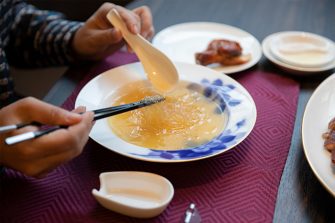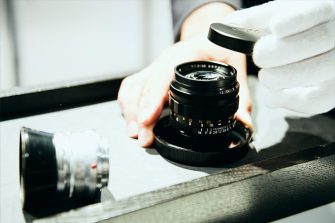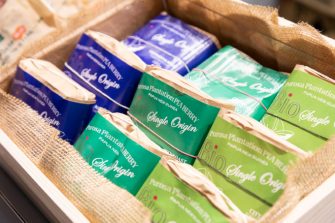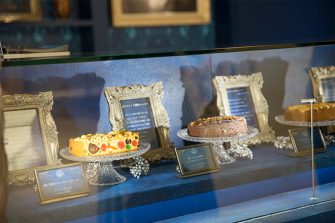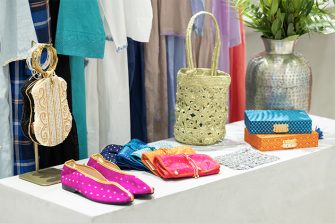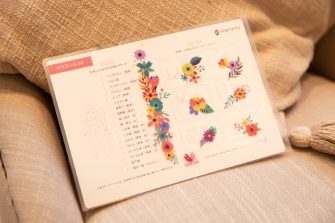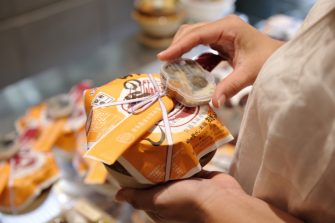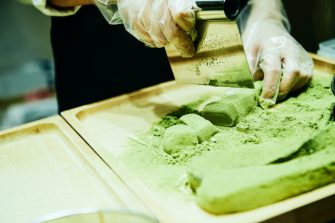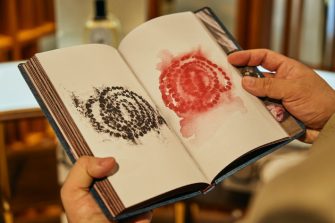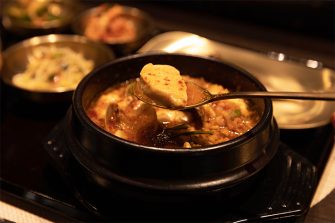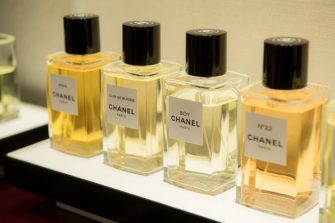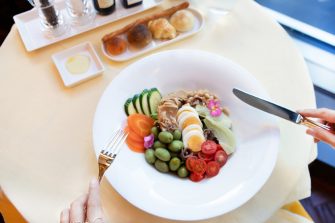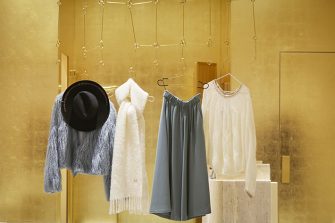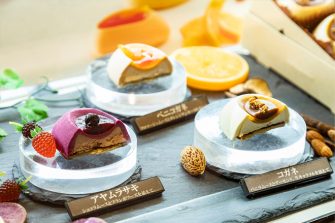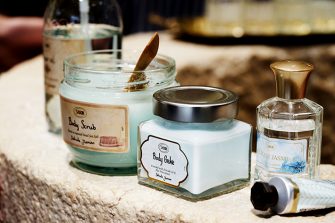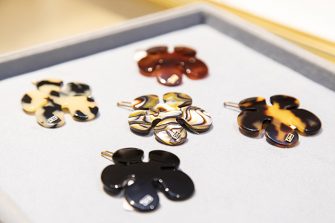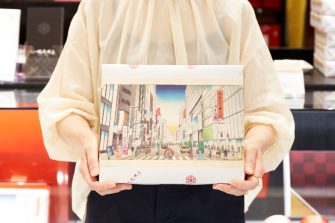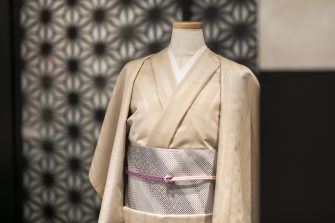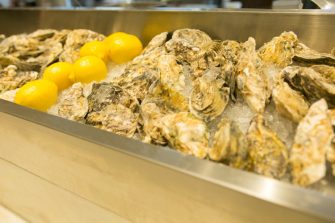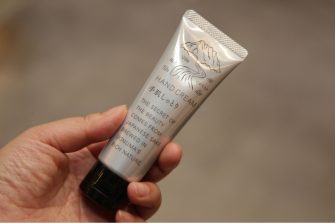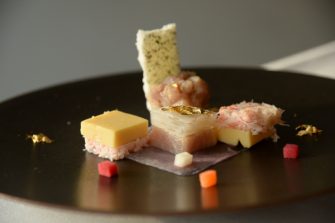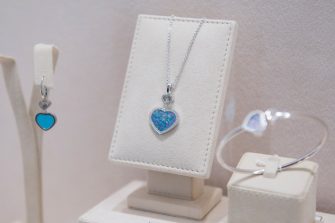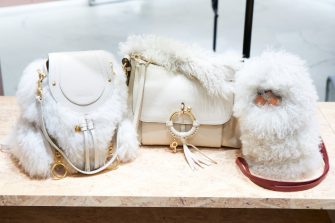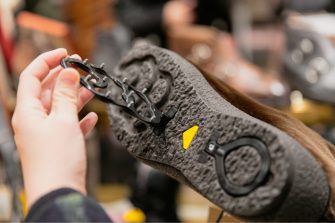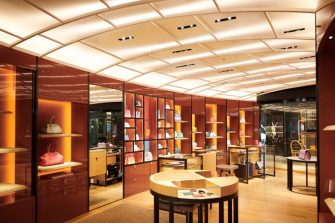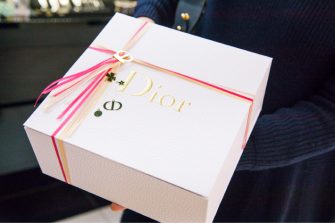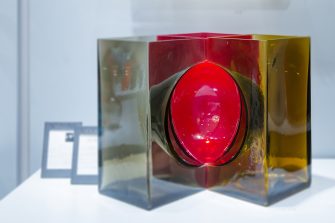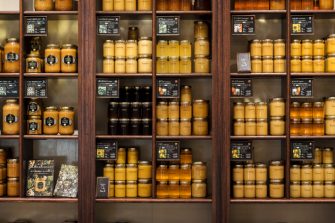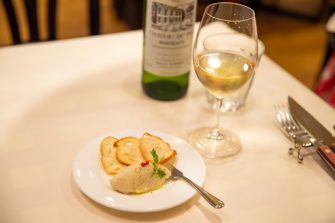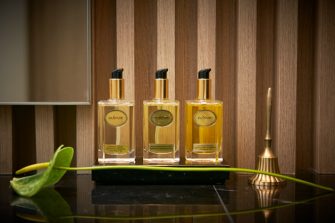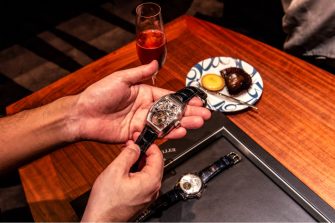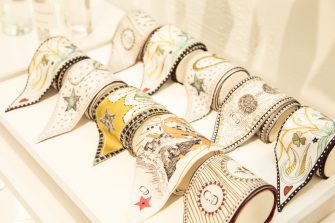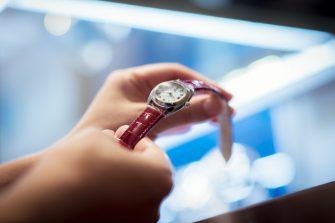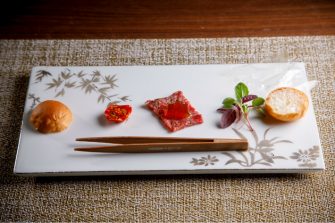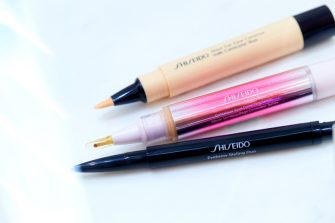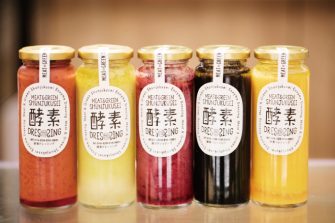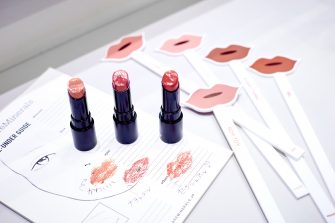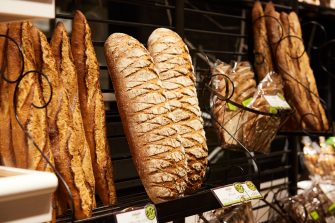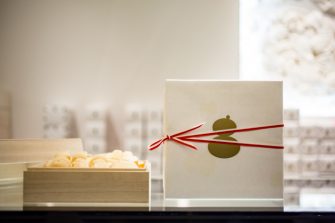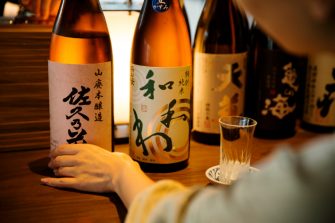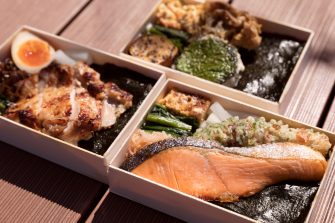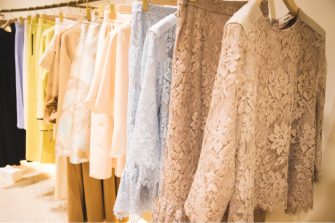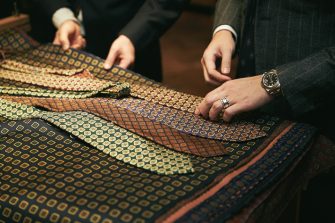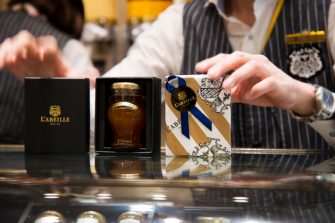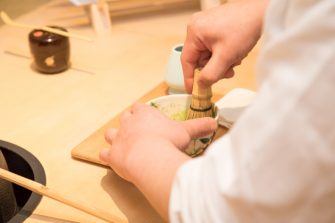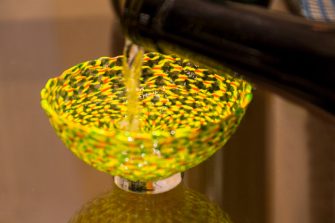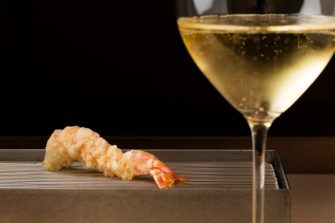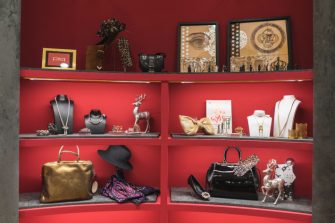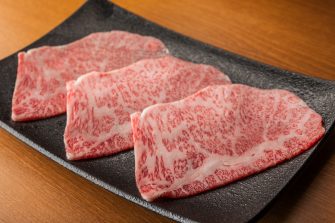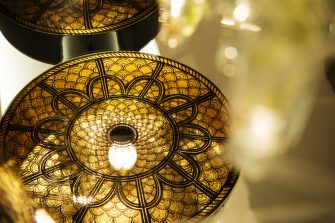

GINZA SIX EDITORS
ファッション、ジュエリー&ウォッチ、ライフスタイル、ビューティ、フード…
各ジャンルに精通する個性豊かなエディターたちが、GINZA SIXをぶらぶらと
歩いて見つけた楽しみ方を綴ります。
あなたがきものに着替えたら! GINZA SIX—How About Changing into a Kimono?!
古谷 尚子
GINZA SIX EDITORS Vol.77
もしもあなたが、時間をかけて、ひょっとしてお金もかけて、きものを着たとしたら…すぐに脱いでしまうのはもったいない! その足でGINZA SIXへ行きましょう。歌舞伎座最寄の東銀座駅からも地下鉄銀座駅からも地下道で直結、雨が降っていても心配はいりません。世界の最先端、TOKYOはこうでなくちゃ! とテンション上がるその空間美。集まる人も国内外問わず感度高し、な銀座の新名所をぶらぶらして、お気に入りのきものを「見せびらかす」のです。色白ならばなおのこと、「きものは七難隠す」魔法のベール。普段ちょっと気後れするハイエンドなブランドやジュエリーのお店のスタッフさんの笑顔が優しい! これ、ホントのはなし笑。
さてさて。石下結城紬(いしげゆうきつむぎ)に更紗柄の帯のワントーンコーデなわたくし。まずは仕事柄お世話になっている博多織の織元が“TOKYOの風景に似合うきものを提案する旗艦店”としてオープンした4Fの「OKANO(オカノ)」へ。
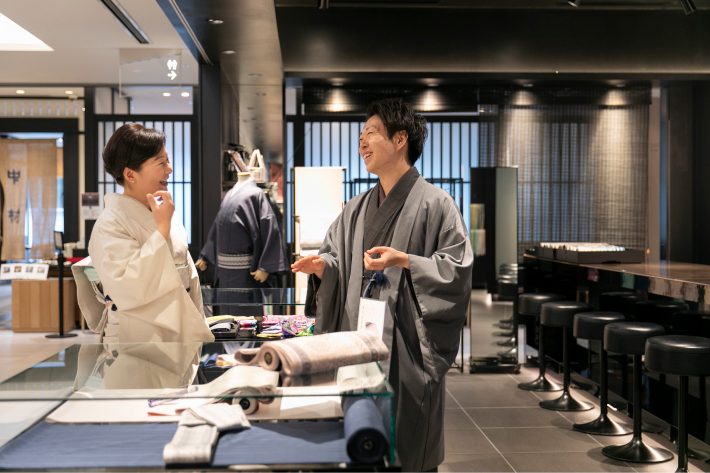
欲しいのは、おとなの半幅帯。半幅帯というと浴衣帯のように思いがちですが、実はいま、毎日のようにきものを着ている上級者ほど趣味性の高いおとなの半幅帯を使いこなしているのです。私が担当している雑誌『きものSalon』でも連載していただいている京都の料理研究家、大原千鶴さんの半幅帯スタイルがその筆頭。帯締めや帯留めも使って、前から見ると普通に名古屋帯に見えるくらい。マスターしたらもっと気軽にきものが楽しめるに違いありません。しかも締めやすさナンバーワンの博多織ならいろいろな帯結びに挑戦できそう。
スタッフの指首さんに出していただいた中で、ひと目で気に入ったヴィヴィッドなロイヤルブルーの半幅帯に三分紐と帯留めをしたら、この日の私の紬にも似合いますね~。

あら? これは、博多織の「きもの」ではありませんか!! 都会に似合うハンサムなきもの! 777年という歴史ある博多織は独鈷(どっこ)柄に代表される「帯」があまりにも有名ですが、年間800反ほどしか織っていない着尺(きものの反物)もあるのだそう。帯も織元直営店ならではの新しいデザイン感覚の博多織が揃います。

ちなみにOKANOでは「オール・ジャパンのモノづくりで世界へ」というコンセプトのもと、きものや帯だけでなく、モダンなファッション小物も多く展開しています。福井の白生地、京都の型、横浜の染めというオリジナルのスカーフ「DEN」(各32,000円 ※以下全て税別価格)は、羽裏や帯揚げにしても素敵かも!

そして、きもの好きでなくとも必見なのが、上質な博多織のシルクのストール(27,000円)です。きものや帯と同じ織り手によるもので、しっとりと柔らかい肌触り。北斎漫画から取材した輪違麻葉(わちがいあさのは)や六ツ手毘沙門亀甲(むつでびしゃもんきっこう)など和の幾何学模様が美しく、海外の友人や男性への贈り物にも喜ばれそうですね。
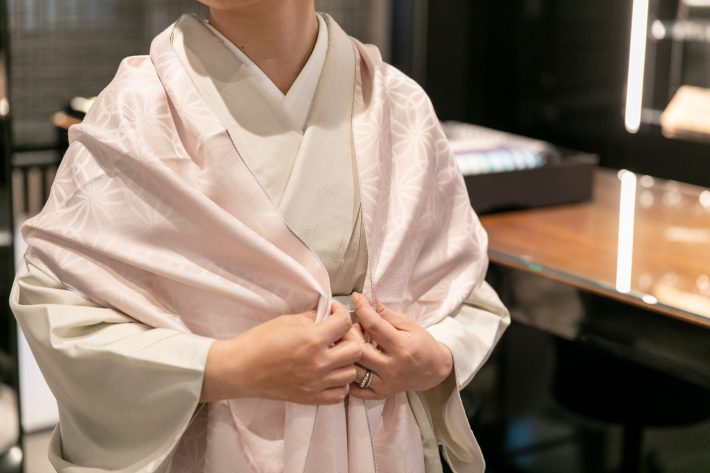
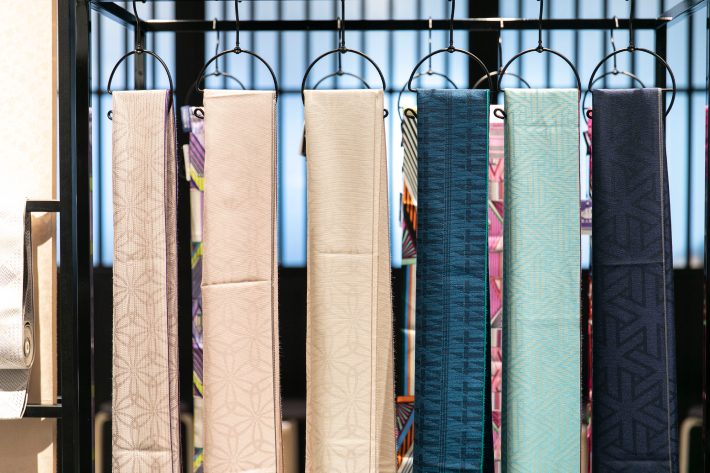
和装洋装という枠を超えた次元でモノづくりを追求している「OKANO」。日本の伝統技術である博多織の可能性を感じました。
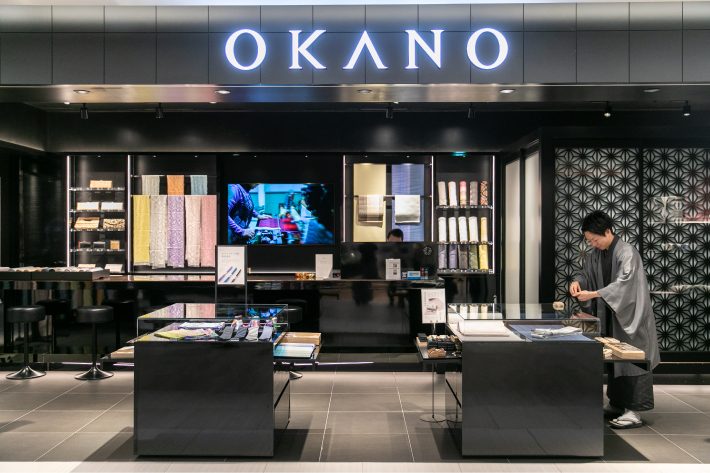
次に向かったのは、気になっていた2Fのジュエリーのお店「AbHerï(アベリ)」。東京のイーストサイドにあるアトリエで丁寧に手作りされているという繊細な細工が秀逸。どこか和のテイストを感じるデザインもあるのです。
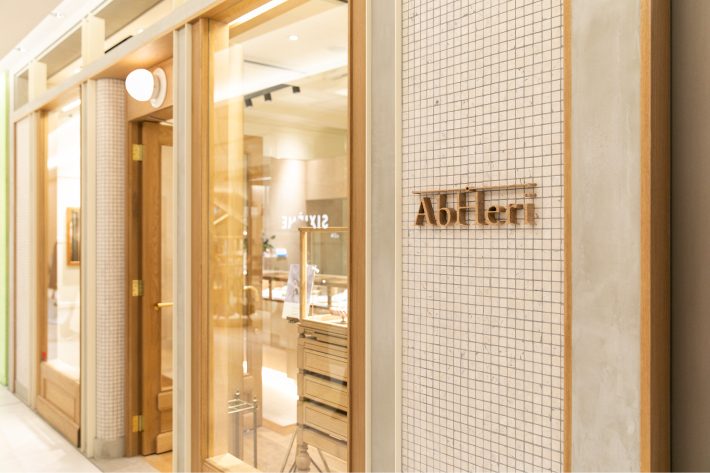
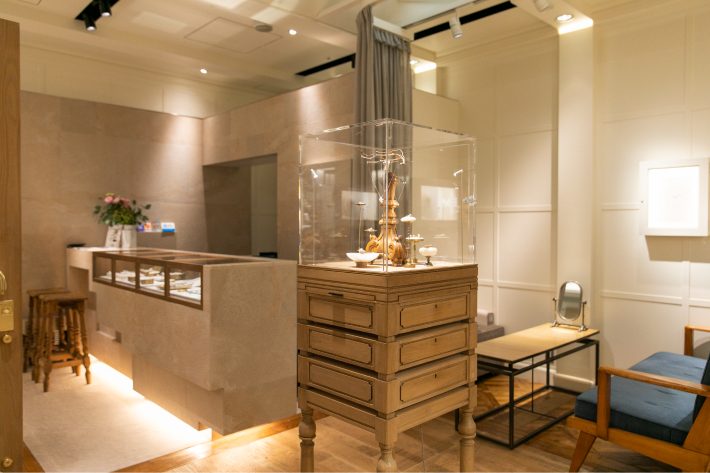
このブランドのアイコンでもある「チェーンリング」(写真内上段、左から270,000円/ベリル、250,000円/アメシスト、420,000円/ガーネット、310,000円/トパーズ)は、スライドアジャスターによってサイズが変えられるので、その日のファッションに合わせてどの指にもできる(つまり太っても大丈夫)という優れもの。男性からなら、サイズがわからない彼女へのプレゼントにもよいですね! カラーストーンが引き立つデザインなので、指元のクリアな輝きにうっとり。重ね付けもありかしら。
これらカラーストーン、そしてダイヤモンドのリング(写真内下段、左から575,000円、485,000円、224,000円)も、レースのような可憐さとモダンなデザインとが共存していて素敵!
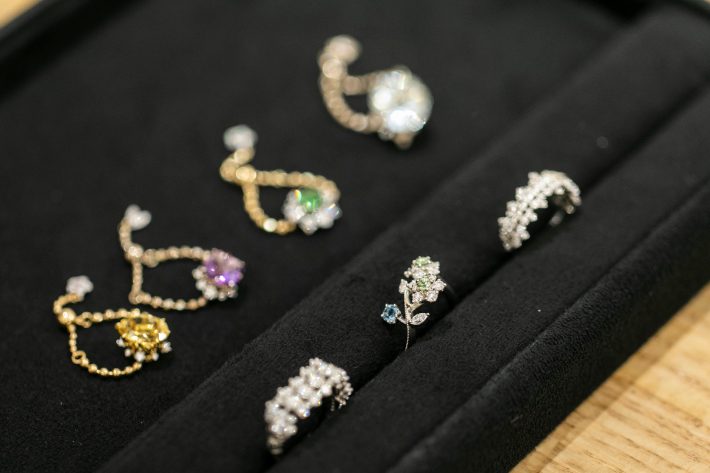
こちらは、表面に絹糸の集合体を表現した、その名も「シルク」(左:210,000円、右:260,000円)。個性的なジュエリーを探している方におすすめ。

「きもの姿にジュエリーはNG」と思い込んでいる方もいますが、それはお茶席や決まりごとのあるフォーマルシーンの話。きものはファッションなのですから、洋服と同じように自由にお洒落を楽しめばよいのです。大事なのはバランス。私はダイヤモンドかパールの小さなひと粒ピアスを愛用しています。リングは洋服と同じ感覚でつけますが、きものや帯に引っかからないようなものを選びます。
「AbHerï」にはきものに似合いそうな華奢なピアスもたくさんあって、それぞれ違った魅力が。テンションあがって時間が経つのを忘れてしまいます。
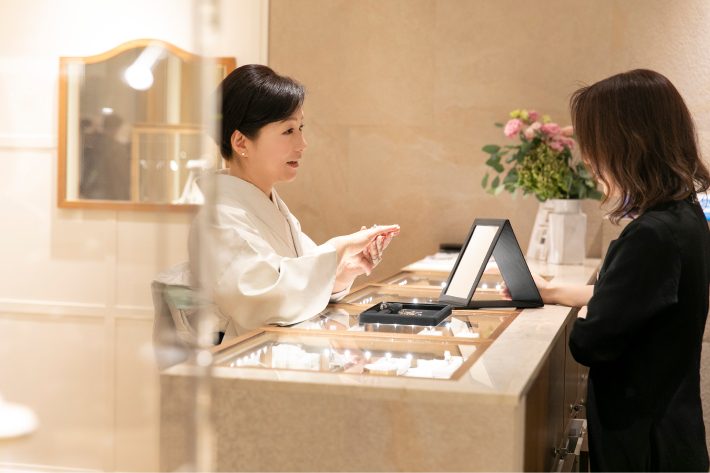
私はきものの雑誌を担当しているのでほぼ毎月、京都に行くのですが、いつも手土産が悩みの種。京都でも売っているものでは芸がない。京都人の気を引くには、味と話題性とパッケージデザインが揃っていなくてはなりませぬ。
そんな時はGINZA SIXのB2Fに駆け込みます。このフードフロアは、ここにしか出してない店、ここでしか売ってないもの、が簡単に見つかるので重宝なんです。今日は「HONMIDO(本実堂)」さんへ。
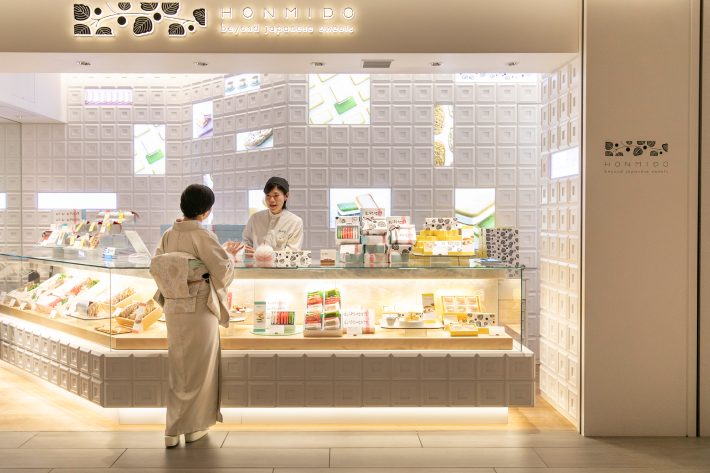
「HONMIDO(本実堂)」は、仙台銘菓「萩の月」で有名な菓匠三全さんが「和菓子、洋菓子というジャンルを超えて世界中から愛される日本ならではのお菓子を発信したい」とGINZA SIXのためにつくったブランド。だからここにしかありません。まず、パッケージの葉のデザインがかわいい!

写真左が人気の「本実堂サンド」(4個入り 797円、8個入り 1,297円)。優しい淡雪(メレンゲ)をラング・ド・シャではさんだお菓子。定番はきな粉と抹茶で、時期によっては季節限定のお味もあるそう。クリームがサンドされているラング・ド・シャはよく見かけますが、淡雪とは新鮮です。気温を気にせず持ち運べるのはお土産によいですね。

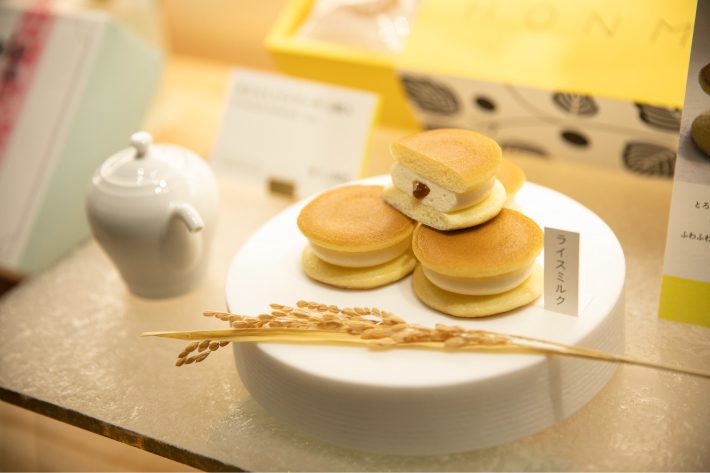
そして、なになに? 「みたらしパンケーキ」(2個入り352円、6個入り1,000円)ですって! あまじょっぱいのって、そそられますわ。ふんわりとしたパンケーキにはさまれたライスミルクプリンの中に、とろりとしたみたらしソース。なるほど~という優しいお味です。ちなみに、購入したみたらしパンケーキの可愛い箱は、私の簪(かんざし)入れになりました。
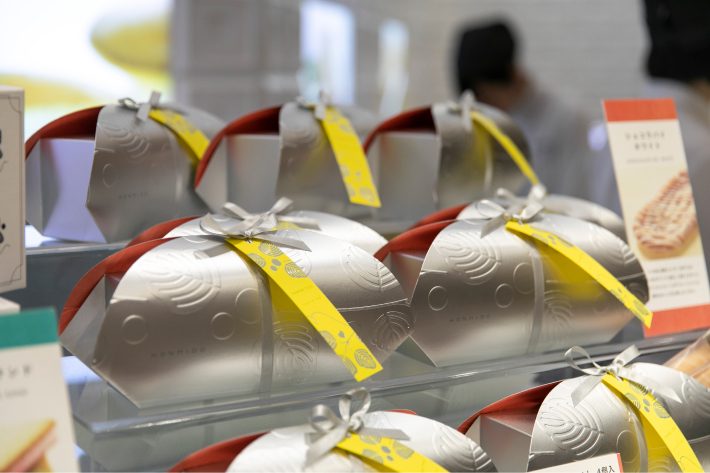
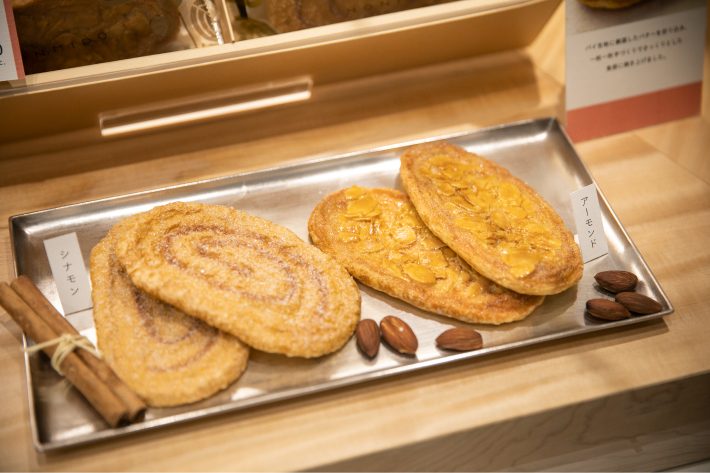
またまたお洒落なアーモンドパイとシナモンパイのパッケージ。パリッと香ばしいリーフパイは、厳選されたバターを練りこんで一枚一枚手作りされているのだそう。アーモンドもシナモンもしっかりした甘さと味わいがありますよ。アーモンドパイ2個とシナモンパイ2個の4個入りで1,065円。
最後に。今回はお邪魔しませんでしたが、GINZA SIXのB3Fには、観世能楽堂があるんです。能楽堂の公演にはぜひきもので。観劇のあとは気になるお店を覗きながらぶらぶらして、きもので銀ぶらを満喫してくださいね。
Text:Naoko Furuya Photos:Natsuko Okada Edit:Yuka Okada
Imagine you’ve taken the time, and maybe spent some money, to put on a kimono … only to immediately take it off? What a waste that would be! Why not head to GINZA SIX instead? You can access it by underground passageway directly from Ginza Station as well as Higashi-ginza Station, closest to the Kabuki-za theater. There’s no need to worry even if it’s raining. With your pulse rising as you step into the beautiful interior, you feel this is what Tokyo should stand for, Tokyo, among the world’s leading cities! The people here, be they Japanese or from overseas, all have a high level of esthetic sense. As I stroll around this new Ginza landmark, I can flaunt one of my favorite kimono to everyone. kimono serves as magical veils that conceal innate imperfections. And the smiles of the staff at the high-end brand and jewelry stores, which I normally can’t screw up the nerve to enter, are heartwarming! It’s the truth (smiles).
Right, let’s go. I’m wearing only one color, a combination of an Ishige Yuki Tsumugi kimono with a sarasa-patterned obi (kimono sash). I begin my tour at Okano on the fourth floor, which was opened by a producer of Hakata-ori (silk fabric made in Hakata), whom I happen to work with professionally, to serve as its flagship store offering kimono suited to the landscape of Tokyo.

I want to buy a half-width obi, suitable for grownups. Half-width obi are associated with yukata (cotton summer kimono). But nowadays, even sophisticated kimono wearers, who wear kimono on a daily basis, are choosing half-width obi for a casual, yet mature look. A prime example of this is Kyoto cuisine expert Chizuru Ohara, who likes to wear half-width obi. She writes a regular column for Kimono Salon, the magazine I’m in charge of. You can also use obijime (decorative string) and obidome (decorative clip); viewed from the front, it looks just like a Nagoya-obi (one type of obi). If you master them, you’re sure to enjoy wearing kimono in a more cozy way. And since the Hakata-ori is the easiest kind to tighten, you’ll be able to try fastening the obi in various ways.
Store-clerk Sashikubi-san pulls out various half-width obi to show me. Immediately, I take a shiny, vivid royal blue one. I fasten it with a sanbuhimo obijime and obidome. I notice it really suits the tsumugi kimono I’m wearing that day.

Wow! This is a Hakata-ori kimono, isn’t it?! It’s a handsome kimono perfectly suited to city life. Hakata-ori has a history going back 777 years, and its obi are very famous, particularly those with a pattern called dokko. Apparently, they only produce around 800 kijaku (standard length of material used for a kimono) of fabric each year. Various Hakata-ori obi with fresh new designs you would expect from a store directly operated by the fabric producer are available here.

Incidentally, Okano has adopted the concept of bringing all-Japan-made to the world. In addition to kimono and obi, it supplies a wide range of modern fashion accessories. An original collection of scarves called “Den” (32,000 yen; all prices listed before tax), made with a white base fabric from Fukui, are shaped in Kyoto and dyed in Yokohama. They might look lovely even as linings or obi sashes!

And even if you’re not a kimono fan, some items you should definitely check out are the high-quality Hakata-ori silk scarves (27,000 yen). They’re woven by the same craftspeople as the kimono and obi. They’re soft and light to the touch. The Japanese geometric patterns, which include Wachigai Asanoha, featured in Hokusai’s Sketches, and Mutsude Bishamon tortoise shell, are beautiful. The scarves would make ideal gifts for friends overseas or for men as well.


Okano seeks to make products in new dimensions straddling the boundary between Japanese-style clothing and Western clothing. I was struck by the potential of Hakata-ori, one of Japan’s traditional techniques.

My next port of call is AbHerï, a jewelry store on the second floor, which I’ve been interested in visiting for some time. The exquisite products demonstrate the finest craftsmanship, and are carefully handcrafted at a studio on Tokyo’s east side. Some of the designs also provide a hint of Japanese tastes.


The brand’s icons are its chain rings (the top row in this photograph, from left to right: 270,000 yen (beryl), 250,000 yen (amethyst), 420,000 yen (garnet), 310,000 yen (topaz)). The size can be altered using the slide adjuster. You can wear them on any finger to suit your tastes for that day. In other words, you can wear them even if your fingers swell… They’re wonderful. One would make a great present for a man to give his girlfriend if he didn’t know her ring size. The designs are such that the colored stones stand out. The clear sparkle on your finger is spellbinding. What if I wear it with other rings?
These colored-stone rings, as well as the diamond rings (the bottom row in this photograph, from left to right: 575,000 yen, 485,000 yen, 224,000 yen), are fantastic. They combine an innocence evocative of delicate lace with modern designs.

The surface of these articles is designed to resemble dense silk threads. The name is “Silk” (left: 210,000 yen, right: 260,000 yen). I recommend them for people looking for individualistic jewelry.

Some people believe you shouldn’t wear jewelry with a kimono. That restriction really applies only for tea ceremonies or formal situations with established rules. A kimono is a fashion item. Just as you would with Western attire, you should feel free to enjoy experimenting with different styles. The important thing is balance. I love wearing pierced earrings with a single little diamond or pearl. I wear rings just as I do with Western clothing, but I choose ones that won’t snag the kimono or obi.
AbHerï offers an abundance of elegant pierced earrings that look like they would go well with kimono, each attractive in its own way. I feel giddy just looking at them. I forget the passage of time.

Because I’m in charge of a kimono magazine, I travel to Kyoto almost every month. Still, I’m always at a loss about what to take as presents. The articles sold in Kyoto are uninspiring. For Kyoto people to be drawn to something, it has to reflect remarkable taste, be trendy, and be attractively packaged.
What I do is head to the second belowground floor in GINZA SIX. On this food floor, it’s easy to find stores that can only be found here and goods sold only here. It’s a real treasure trove. Today I make my way to HONMIDO.

HONMIDO is a brand created just for GINZA SIX by Kasho Sanzen, which is famous for Haginotsuki, a confectionery and a popular souvenir from Sendai. The brand’s goal is to distribute unique Japanese confectionery blurring the boundary between Japanese-style and Western-style confectionery, beloved by people the world over. The brand is available only here. For starters, the leaf design on the packaging is really pretty.

On the left of this photograph are the popular HONMIDO Sandwiches (four sandwiches: 797 yen, eight sandwiches: 1,297 yen). They’re actually a confectionery, with a soft meringue sandwiched between langue de chat. The most popular variety is flavored with roasted soy powder and powdered green tea. Seasonal varieties are also available at only certain times of the year. Langue de chat with cream sandwiched in between is fairly common, but replacing the cream with meringue is a new idea. You needn’t worry about the temperature on your way back, so it makes for a great souvenir gift.


And what are these? They’re Mitarashi pancakes (352 yen for two, 1,000 yen for six). The idea of a sweet-salty pancake is intriguing. Sandwiched between the fluffy pancakes is a rice milk pudding. Inside is a blob of Mitarashi sauce (sweet soy sauce). The flavor is mild and pleasant. Incidentally, I’ve started using the appealing box containing the Mitarashi pancakes I bought as a container for my kanzashi hairpins.


Next is a package containing elegant-looking almond pies and cinnamon pies. Apparently, these crispy and fragrant pies are kneaded with a specially-selected butter. Each is made by hand. Both the almond and cinnamon versions are sweet and flavorsome. The price is 1,065 yen for a package of four, containing two almond pies and two cinnamon pies.
And there’s one place to recommend before ending this coverage. Although I didn’t go there this time, on the third belowground floor is the Kanze Noh Theater. I urge you to wear a kimono when you go to see a Noh performance. Once the play is over, why not take a stroll in your kimono to check out the stores you’re interested in? GINZA SIX is a perfect place to enjoy the Ginza experience.
Text: Naoko Furuya Photos: Natsuko Okada Edit: Yuka Okada
古谷 尚子
『家庭画報特選 きものSalon』編集長。1988年株式会社世界文化社入社。Men’sEx編集部でメンズファッションを担当し、書籍編集部でカリスマ美容家IKKOさんの単行本を3冊手がけ、いずれもベストセラーに。その後『MISS Wedding』『NEXTWEEKEND』の編集長を歴任。現在『きものSalon』の公式通販サイト「和美人百貨店」(kgwabijin.jp)のプロデュースとバイヤーも兼務するマルチエディター。


